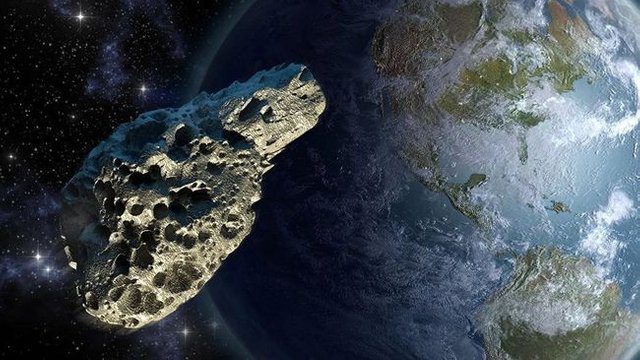Ferris wheel-sized 'moon' is suspiciously close to Earth
The asteroid Kamo oalewa passes within 14.48 million kilometers of the Earth every April. That would be part of our moon.

A new study published Nov. 11 in the journal Nature Earth & Environment suggests that the asteroid approaching Earth may be a piece of the moon that could have broken off in an ancient collision.
If confirmed, this news would make the asteroid the first known near-Earth object of lunar origin and help shed light on the chaotic history of our planet and its cratered companion, the researchers said.
The asteroid, known as Kamo oalewa, a Hawaiian word meaning "vibrating celestial debris," was discovered by astronomers using the PanSTARRS telescope in Hawaii in 2016.The object is 4 million times fainter than the human eye can see, but every April, the rock orbits close enough to Earth that our most powerful telescopes can see it for a while. (In this case, "close enough" means about 14.4 million kilometers from Earth, or nearly 40 times the distance between Earth and the Moon.) The asteroid is observed to be about the size of a Ferris wheel, with a diameter of no more than 58 meters.
Due to its near-Earth orbit, Kamo oalewa is consistent with objects known as quasi-satellites, which are basically objects that revolve around the Sun but are quite close to the Earth. Astronomers have previously detected a large number of quasi-satellites, but in general they are difficult to study in detail because of their small size and incredible brightness.
The origin of such small travelers is difficult to determine. But the authors of this new paper attempt to reveal the secrets of Kamo oalewa by studying the faint patterns of light reflected from its surface. The researchers used large binoculars to make regular visits to Kamo oalewa every April for many years. They found that the asteroid's spectrum is largely consistent with lunar samples from NASA's Apollo missions, suggesting that the Ferris wheel-sized boulder may be loose lunar debris. The researchers also added that the asteroid's orbit is strikingly similar to Earth's, typical of rocks that fly to Earth from outside the solar system. Maybe this rock has been in our neighborhood for a long time.
If Kamo oalewa is a fragment of the lunar surface, it is unclear what kicked it off and how it got into its current orbit; no near-Earth object of lunar origin has ever been found before. However, after analyzing the rock's orbit, the team found three other NEOs with very similar orbital patterns that could be considered "companions" of Kamo oalewa. All of the rocks were likely thrown into space during the same ancient lunar collision.
More research is needed on these quasi-satellites to determine their origin. Fortunately, the researchers have several hundred more to check with Kamo oalewa in April. According to the authors of the study, the asteroid will continue in its current orbit for about 300 years before it finally escapes into space.